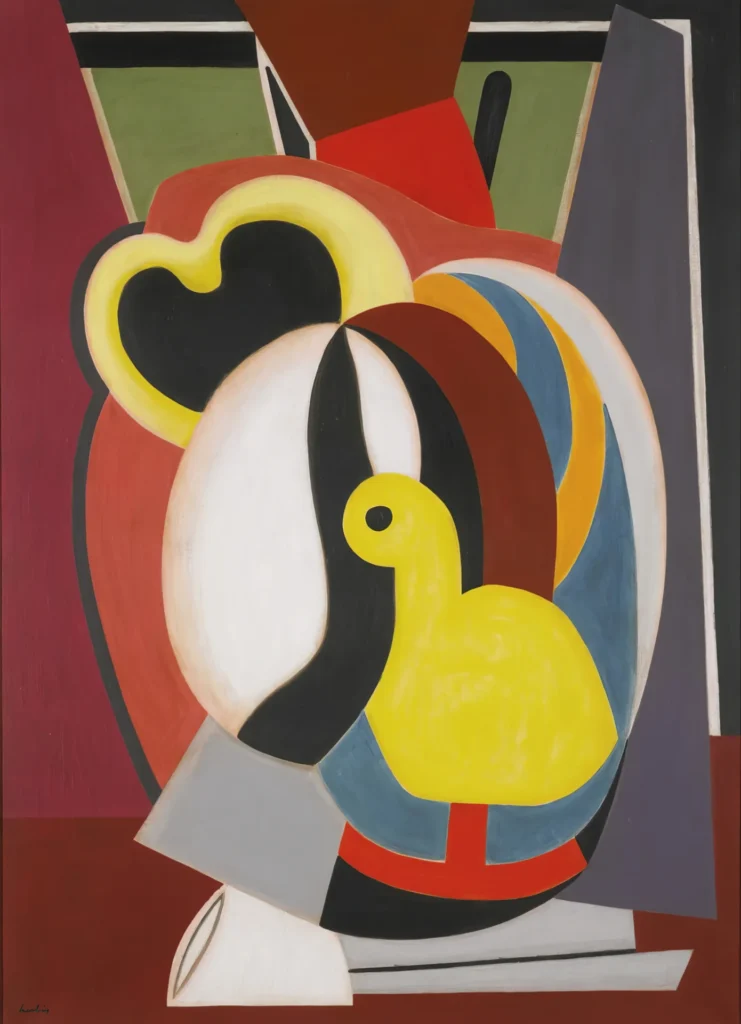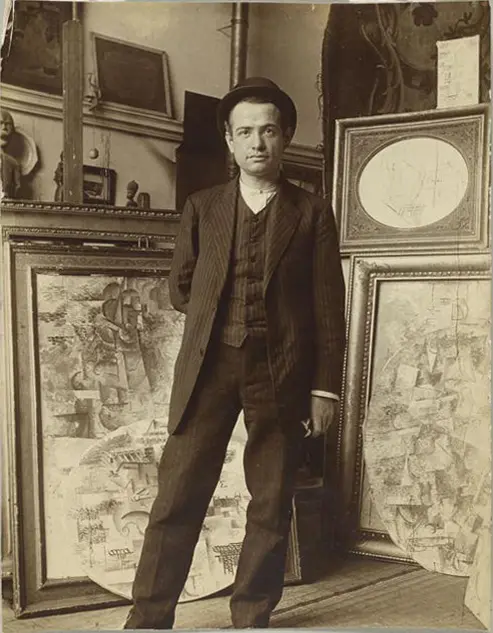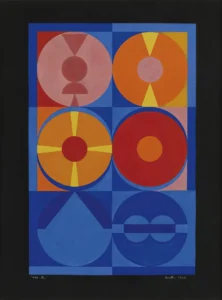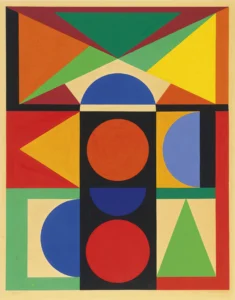Composition
Auguste Herbin's Composition series exemplifies his artistic journey from Cubism to abstraction, particularly during the early 20th century. His works are recognized for their intricate interplay of geometric and biomorphic shapes and an innovative use of color theory. Starting from 1916, these paintings underscore Herbin's commitment to non-representational art, making him a pivotal figure in the Abstract movement. His compositions have received critical acclaim and remain influential in contemporary art discussions.
1916 - 1940s
About the Artwork
Auguste Herbin began his artistic career influenced by Cubism, showcasing a unique blend of the movement's characteristics with his budding interest in abstraction. In the years 1916-1917, he created some of his first abstract works, showing a remarkable shift towards geometry and abstraction. His compositions reflect a deep engagement with color theory, evoking emotions and ideas through their vibrant palettes and structured arrangements. By the late 1920s, Herbin was at the forefront of the non-figurative movement, co-founding the Abstraction-Création group, which celebrated a departure from traditional representation. The works he produced from the 1930s onward further solidified his reputation, focusing on bold geometric forms and the innovative use of color. Today, Herbin is celebrated for his significant contributions to abstract art, inspiring generations of artists who followed.
Did You Know
Liked what you see? Add it to your collection.
Enjoyed reading? Share it.
Related Artworks
... continued
Early Abstract Period (1916-1917)
One of Herbin's early abstract compositions, painted in 1916, marks a significant transition from his Cubist style to a more abstract and geometrical aesthetic. This work, as described in the Christie's lot essay, features interlocking sections of varied colors and patterns, creating a surface of superimposed planes. It was exhibited at the Galerie de l’Effort Moderne and praised by art dealer Léonce Rosenberg.
Return to Abstraction (1926-1930s)
After a brief return to more representational painting in the early 1920s, Herbin reverted to abstraction by the late 1920s. A composition from this period, such as the one described by the University of Michigan Museum of Art, features non-representational, colorful, flat, overlapping geometric and biomorphic abstract forms. This style aligns with his co-founding of the Abstraction-Création group in 1931, which emphasized non-figuration and geometric order.
Later Works (1930s-1940s)
In the 1930s and 1940s, Herbin continued to develop his abstract style. For example, a Composition from 1935, listed on Artsy, is an oil on canvas work characterized by its geometric and abstract elements, typical of his work during this period. Another example from 1940, as seen on WikiArt, continues the theme of abstract art with a focus on geometric forms and vibrant colors, reflecting Herbin's mature abstract style.
Common Themes
Geometric and Biomorphic Forms: Herbin's compositions often feature geometric shapes and biomorphic forms, which were central to his abstract style. Color Theory: He was deeply interested in color theory and the arrangement of colors to communicate meaning. Non-Representational: Most of his compositions from the 1920s onwards are non-representational, rejecting traditional notions of perspective, modeling, and foreshortening. Influence and Legacy: Herbin's work had a significant influence on younger abstract artists, and he is remembered as one of the most important abstract artists of his time.








